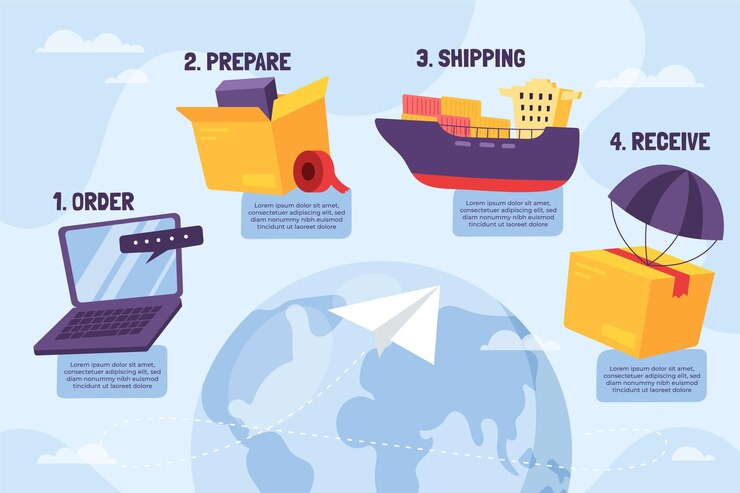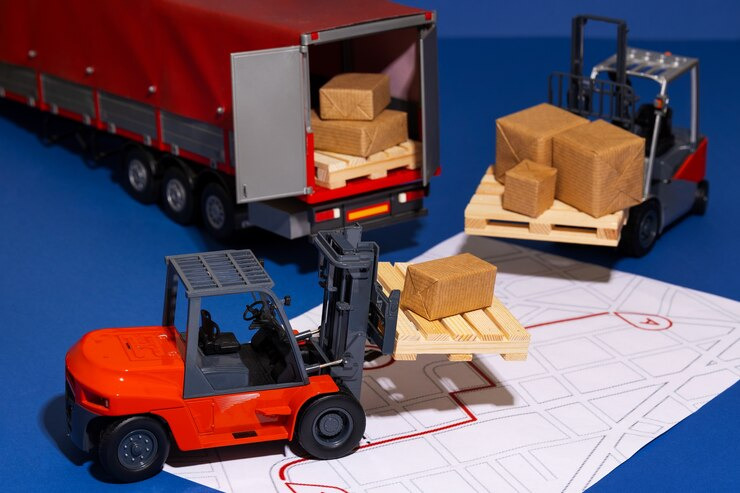Shipping goods from China to Canada can be a complex and time-consuming process, especially if you are not familiar with the customs regulations, documentation requirements, and shipping options. That’s why many businesses rely on freight forwarders to handle the logistics of their international trade.
A freight forwarder is a company that acts as an intermediary between the shipper and the carrier, arranging the transportation, documentation, and clearance of goods across borders. A good freight forwarder can save you time, money, and hassle by ensuring that your shipments are delivered safely and efficiently.
But how do you choose the best freight forwarder from China to Canada? Here are some factors to consider:
Understanding the shipping process from China to Canada

Before you select a freight forwarder, you should have a clear understanding of the shipping process from China to Canada. This includes:
freight forwarder from China to canada
- The incoterms that define the responsibilities and liabilities of the seller and the buyer in the transaction. For example, FOB (Free on Board) means that the seller is responsible for the goods until they are loaded on the vessel, while DDP (Delivered Duty Paid) means that the seller is responsible for the goods until they are delivered to the buyer’s premises, including paying the customs duties and taxes.
- The mode of transportation that suits your needs and budget. You can choose between air freight, sea freight, rail freight, or a combination of these. Air freight is the fastest but also the most expensive option, while sea freight is the cheapest but also the slowest option. Rail freight is a relatively new and cost-effective option that connects China and Europe via the Belt and Road Initiative.
- The customs clearance process that applies to your goods. You need to comply with the import and export regulations of both China and Canada, as well as any other countries that your goods transit through. You need to provide accurate and complete documentation, such as commercial invoices, packing lists, certificates of origin, bills of lading, and customs declarations. You also need to pay the applicable duties and taxes, which vary depending on the type, value, and origin of your goods.
Common challenges in the shipping process

Shipping from China to Canada can pose some challenges that you need to be aware of and prepared for. Some of the common challenges are:
- Delays due to factors such as weather, congestion, strikes, holidays, inspections, or errors. Delays can affect your delivery time, customer satisfaction, and cash flow. To avoid or minimize delays, you should plan ahead, book your space in advance, track your shipments, and communicate with your freight forwarder and carrier regularly.
- Damages or losses due to mishandling, theft, accidents, or natural disasters. Damages or losses can result in financial losses, claims, and disputes. To prevent or reduce damages or losses, you should pack your goods properly, label them clearly, insure them adequately, and inspect them upon arrival.
- Discrepancies between the information or documents provided by the seller and the buyer, or between the actual goods and the declared goods. Discrepancies can lead to fines, penalties, confiscations, or rejections. To avoid or resolve discrepancies, you should verify the information or documents before sending or receiving them, and report any errors or issues as soon as possible.
The importance of streamlining your shipping process

Streamlining your shipping process from China to Canada can bring you many benefits, such as:
- Saving costs by reducing the transportation, storage, and handling fees, as well as the duties and taxes. You can save costs by choosing the most suitable mode of transportation, optimizing your packaging and loading, and taking advantage of preferential trade agreements or duty relief programs.
- Improving efficiency by shortening the transit time, simplifying the documentation, and eliminating the unnecessary steps or intermediaries. You can improve efficiency by planning your shipments well, using electronic data interchange (EDI) or blockchain technology, and consolidating or splitting your shipments as needed.
- Enhancing quality by ensuring the safety, security, and integrity of your goods, as well as the compliance with the standards and regulations. You can enhance quality by selecting reliable and reputable freight forwarders and carriers, implementing quality control measures, and obtaining the necessary certifications or accreditations.
Tips for optimizing your shipping documentation

One of the key aspects of streamlining your shipping process is optimizing your shipping documentation. Here are some tips to help you do that:
- Prepare your documents early and make sure they are accurate, complete, and consistent. You should prepare your documents as soon as you confirm the order, and check them for any errors or omissions. You should also make sure that the information on your documents matches the information on your goods and labels.
- Use standardized templates and formats for your documents. You should use the templates and formats that are accepted and recognized by the customs authorities and the carriers. You should also use the same language, currency, and units of measurement throughout your documents.
- Digitize your documents and share them electronically with your freight forwarder and carrier. You should use digital platforms or systems that allow you to create, store, and transmit your documents online, such as EDI or blockchain. This can reduce the paper work, the risk of loss or damage, and the processing time.
Choosing the right shipping method

Another important aspect of streamlining your shipping process is choosing the right shipping method for your goods. Here are some factors to consider when choosing your shipping method:
freight forwarder from China to canada
- The nature of your goods. You should consider the characteristics of your goods, such as the size, weight, volume, value, perishability, fragility, and hazardousness. These factors can affect the suitability, availability, and cost of different shipping methods. For example, if your goods are bulky, heavy, or low-value, you may opt for sea freight, while if your goods are small, light, or high-value, you may prefer air freight.
- The urgency of your delivery. You should consider the delivery time that you and your customers expect or require. This can influence the speed, reliability, and frequency of different shipping methods. For example, if your delivery is urgent, you may choose air freight, while if your delivery is flexible, you may choose sea freight or rail freight.
- The budget of your shipment. You should consider the shipping cost that you and your customers are willing or able to pay. This can affect the affordability, profitability, and competitiveness of different shipping methods. For example, if your budget is tight, you may choose sea freight or rail freight, while if your budget is generous, you may choose air freight or a combination of shipping methods.
Utilizing technology for streamlined shipping

Technology can play a vital role in streamlining your shipping process from China to Canada. Here are some examples of how you can utilize technology for streamlined shipping:
- EDI. EDI is a system that allows you to exchange data and documents electronically with your freight forwarder, carrier, customs, and other parties involved in the shipping process. EDI can help you reduce the paper work, the human errors, and the processing time, as well as improve the accuracy, security, and traceability of your data and documents.
- Blockchain. Blockchain is a technology that enables you to create and share a distributed ledger of transactions and records with your freight forwarder, carrier, customs, and other parties involved in the shipping process. Blockchain can help you increase the transparency, trust, and efficiency of your shipping process, as well as reduce the fraud, corruption, and disputes.
- GPS. GPS is a technology that allows you to track and monitor the location and movement of your goods throughout the shipping process. GPS can help you improve the visibility, control, and performance of your shipments, as well as alert you of any delays, damages, or deviations.
Building strong relationships with shipping partners

One of the key factors that can affect the success of your shipping process from China to Canada is the quality of your relationships with your shipping partners, such as your freight forwarder, carrier, customs broker, and insurance provider. Here are some tips to help you build strong relationships with your shipping partners:
- Choose your shipping partners carefully and make sure they are qualified, experienced, and reputable. You should do some research and background checks on your potential shipping partners, and ask for references, testimonials, or certifications. You should also compare their services, prices, and reviews, and negotiate the best terms and conditions for your shipments.
- Communicate with your shipping partners regularly and make sure they are informed, updated, and aligned. You should establish clear and frequent communication channels with your shipping partners, and share your expectations, requirements, and feedback. You should also keep them posted on any changes, issues, or problems that may arise during the shipping process, and seek their advice, support, or solutions.
- Appreciate and reward your shipping partners and make sure they are satisfied, motivated, and loyal. You should show your gratitude and recognition to your shipping partners for their hard work, dedication, and performance. You should also provide them with incentives, bonuses, or referrals, and maintain a long-term and mutually beneficial relationship with them.
Implementing quality control measures

Quality control is an essential part of streamlining your shipping process from China to Canada. Quality control refers to the process of ensuring that your goods meet the standards and specifications that you and your customers expect or require. Here are some steps to help you implement quality control measures:
- Define your quality criteria and make sure they are clear, measurable, and achievable. You should determine the quality criteria that apply to your goods, such as the appearance, functionality, durability, safety, and compliance.
- Conduct your quality inspections and make sure they are thorough, timely, and consistent. You should perform quality inspections at different stages of the shipping process, such as before, during, and after the production, packaging, loading, and delivery. You should also use reliable and standardized inspection methods, tools, and criteria, and record and report the inspection results and actions.
- Correct your quality issues and make sure they are resolved, prevented, and improved. You should identify the root causes of any quality issues that arise during the shipping process, and take appropriate corrective and preventive actions. You should also implement continuous improvement measures, such as feedback, training, and audits, to enhance the quality of your goods and shipping process.
- Track and monitor your shipments and make sure they are visible, secure, and on schedule. You should use technology, such as GPS, RFID, or barcode, to track and monitor the status and location of your shipments throughout the shipping process. You should also receive regular updates and alerts from your freight forwarder and carrier, and intervene if any issues or deviations occur.




